Curriculum
Madi Grace | Reading Learning Specialist
Liana Burns | Writing Learning Specialist Image: 3D Whole Group Explicit Reading Instruction

Curriculum
Madi Grace | Reading Learning Specialist
Liana Burns | Writing Learning Specialist Image: 3D Whole Group Explicit Reading Instruction
Hampton Primary School’s Reading Instructional model focuses on explicitly teaching skills that help students use strategies to comprehend what they read. Across the school, during our reading sessions, all children have the opportunity to practice the skill being taught by reading independently using their inner voice. Building reading stamina is part of the process. Currently, across the school, we are achieving the following:
Prep: 4 mins
Grade 1: 8 mins
Grade 2: 10 mins
Grade 3: 15 mins
Grade 4: 17 mins
Grade 5: 20 mins
Grade 6: 20 mins
Once the students have practised the skill while reading independently, they then have the opportunity to discuss what they read in relation to the skill. This might be with the teacher, a partner, a small group, or the whole class. Discussing a text in relation to the skill being taught generates rich discussions. The discussions might also include misconceptions, which are an important part of the process.
Children of all ages continue to learn to read with increasing insight, depth and engagement. Listening to your child read and asking them to retell exactly what they just read helps them to become fluent readers who comprehend what they are reading. This also gives your child the opportunity to practise the skills being taught at school. Retelling and rereading parts you can’t remember the first time can also help improve conversation and comprehension skills, such as summarising and analysing. When was the last time you heard your child read?
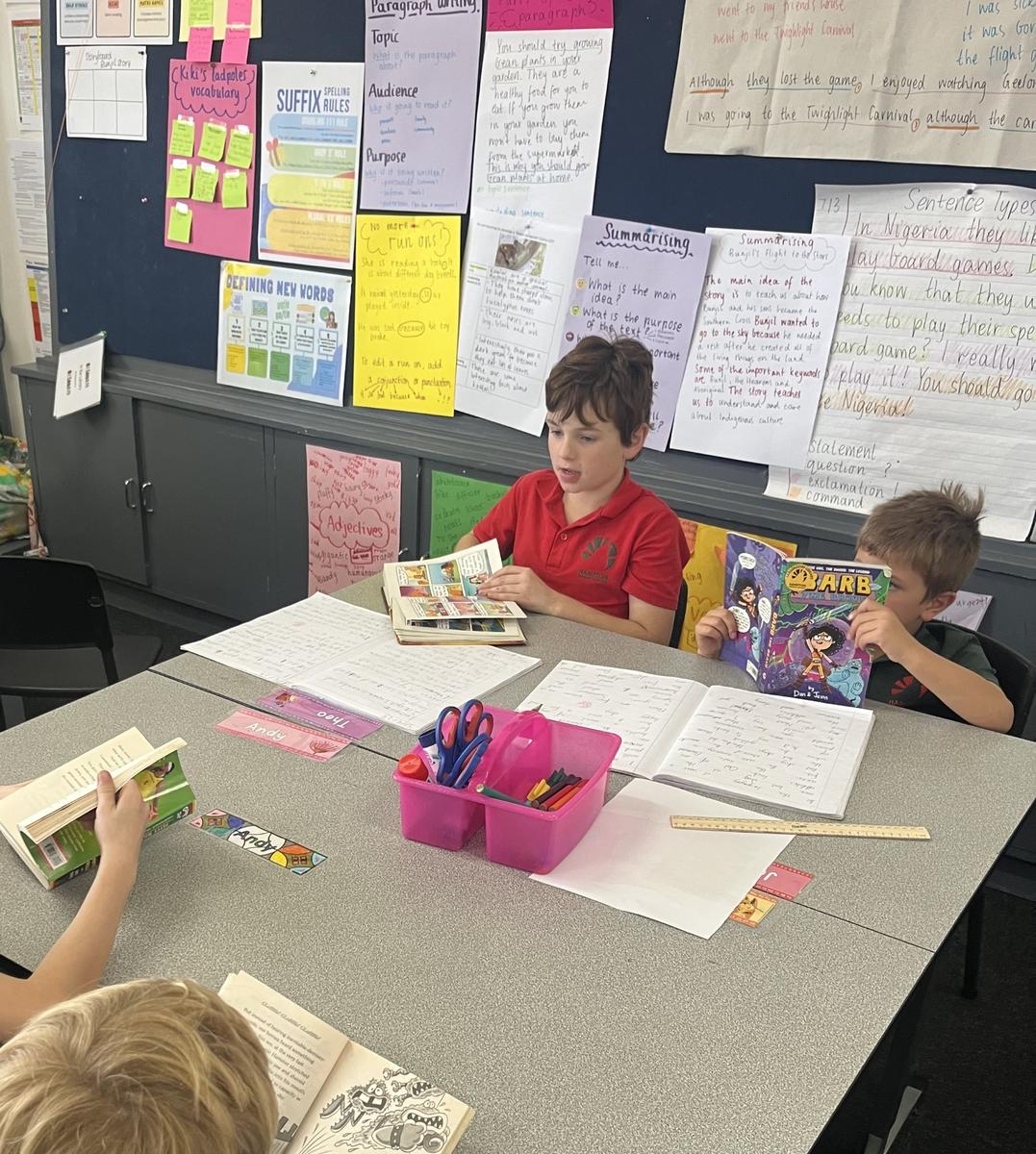
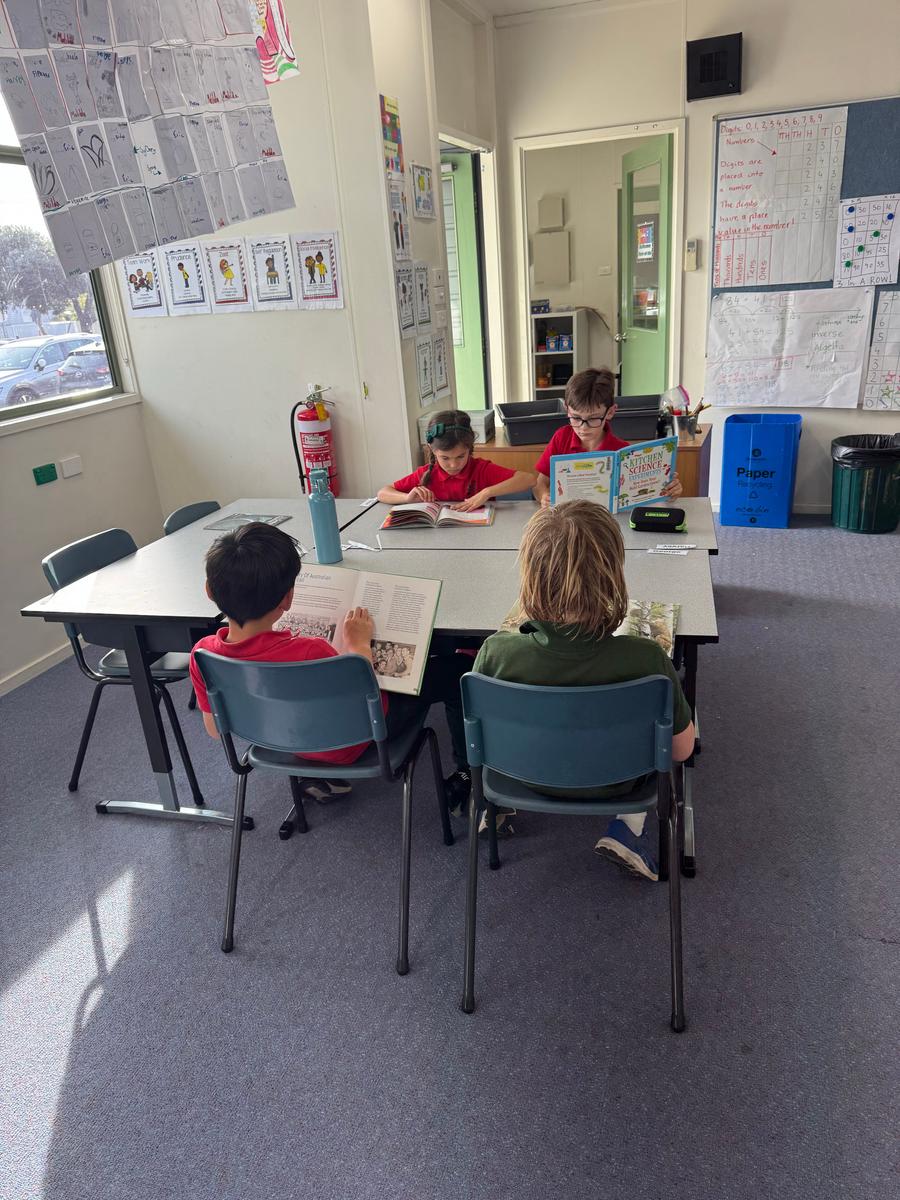


Independent Reading In Action
Grade 2 practising the skill of inferring
Grade 3 practising the skill of finding the key details
In Foundation to Year 2 classrooms, daily phonics instruction is integral to literacy development, focusing on the systematic teaching of phonemes (sounds) and graphemes (letters or letter combinations). Students engage in activities that enhance their ability to manipulate sounds within words, such as blending and segmenting. Instruction is hands-on and differentiated to cater to the diverse needs of our students.
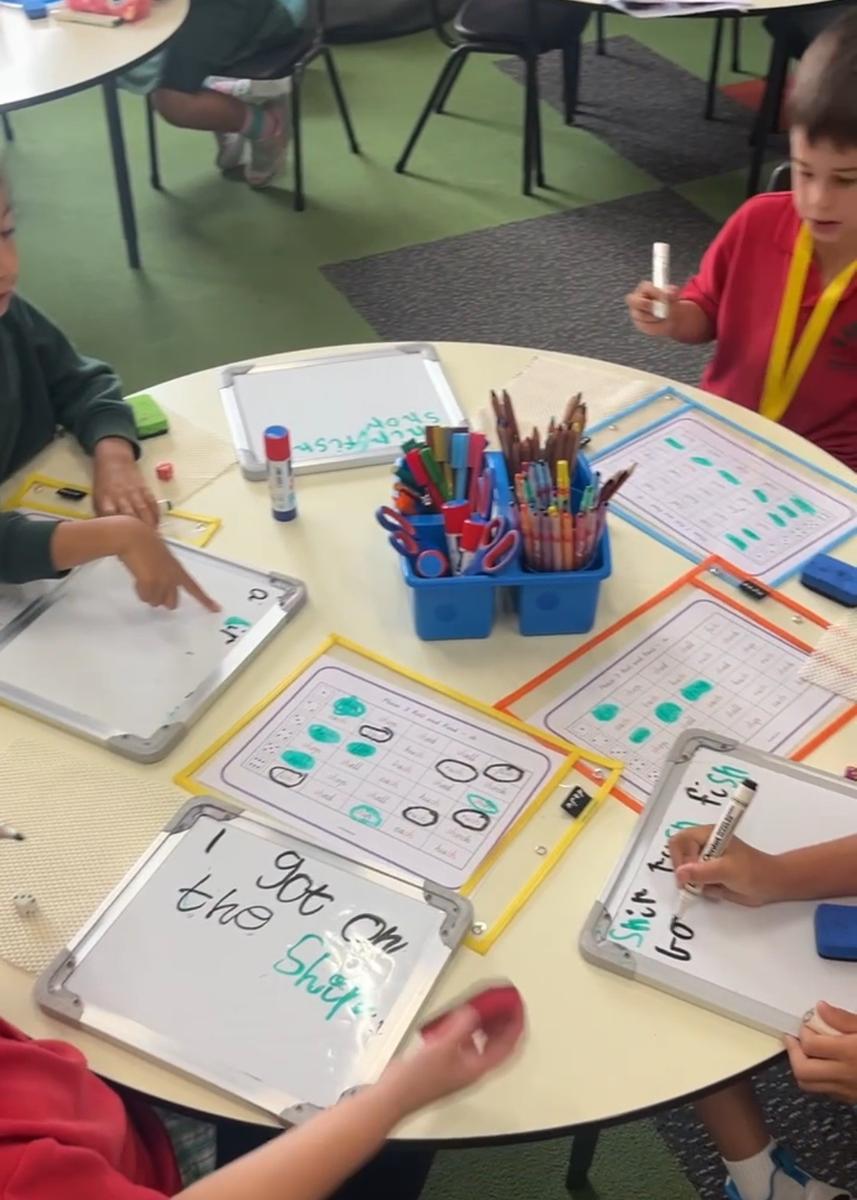
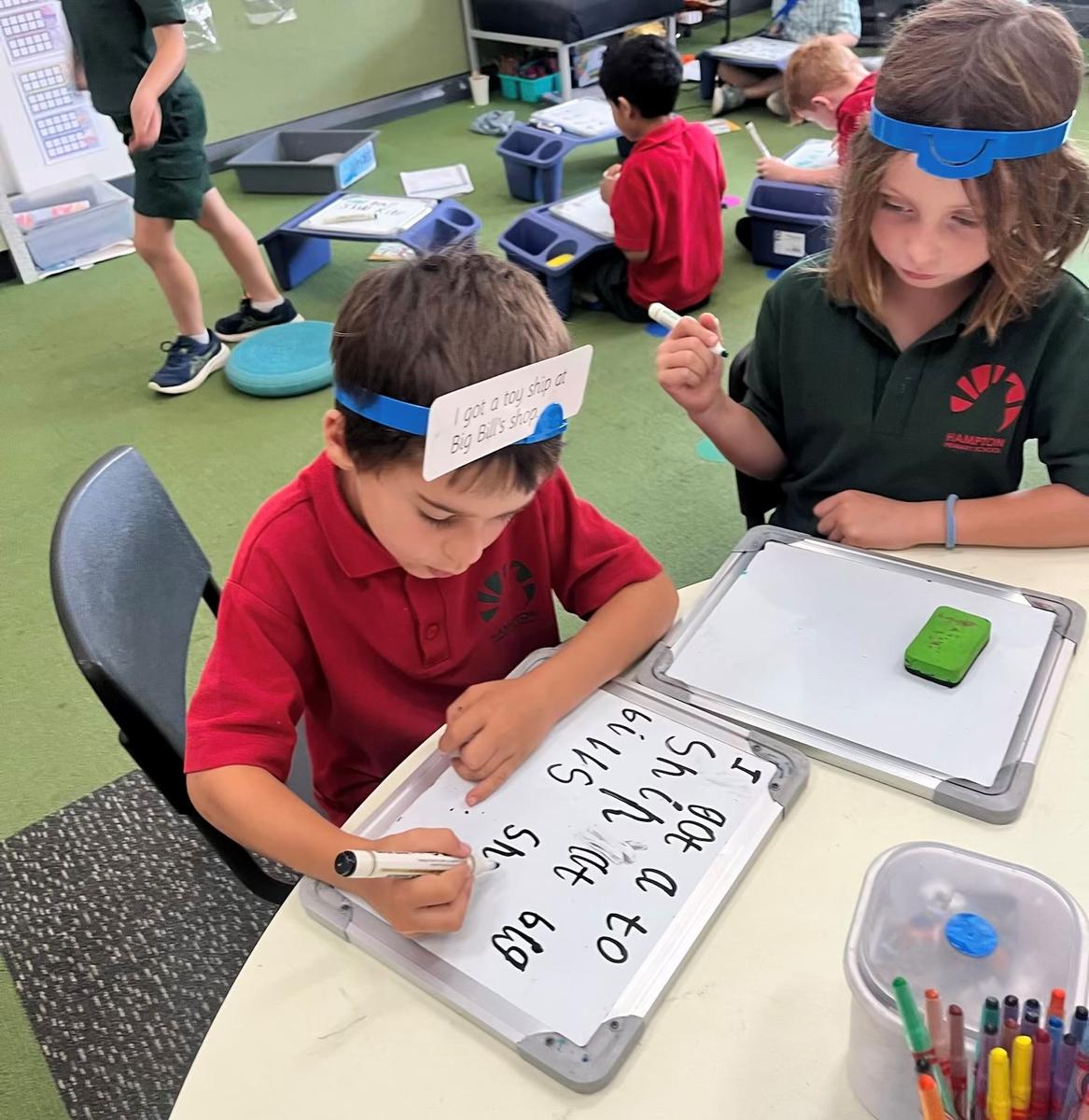


Here is an overview of what our students in Year 1 and 2 students have been learning:
In addition to their daily phonics practice, Year 1 students have been learning about the silent final 'e' rule. They've learned that when a word ends with a silent 'e', it often transforms the preceding vowel into its long sound. For example, in the word 'cake', the 'a' takes on its long sound, as if saying its name. They’ve also extended their understanding to other long vowel sounds such as /ai/ and /ay/, found in words like 'rain' and 'play'. To reinforce this concept, students have been engaging in various hands-on activities, including word hunts, word manipulation exercises and interactive games.
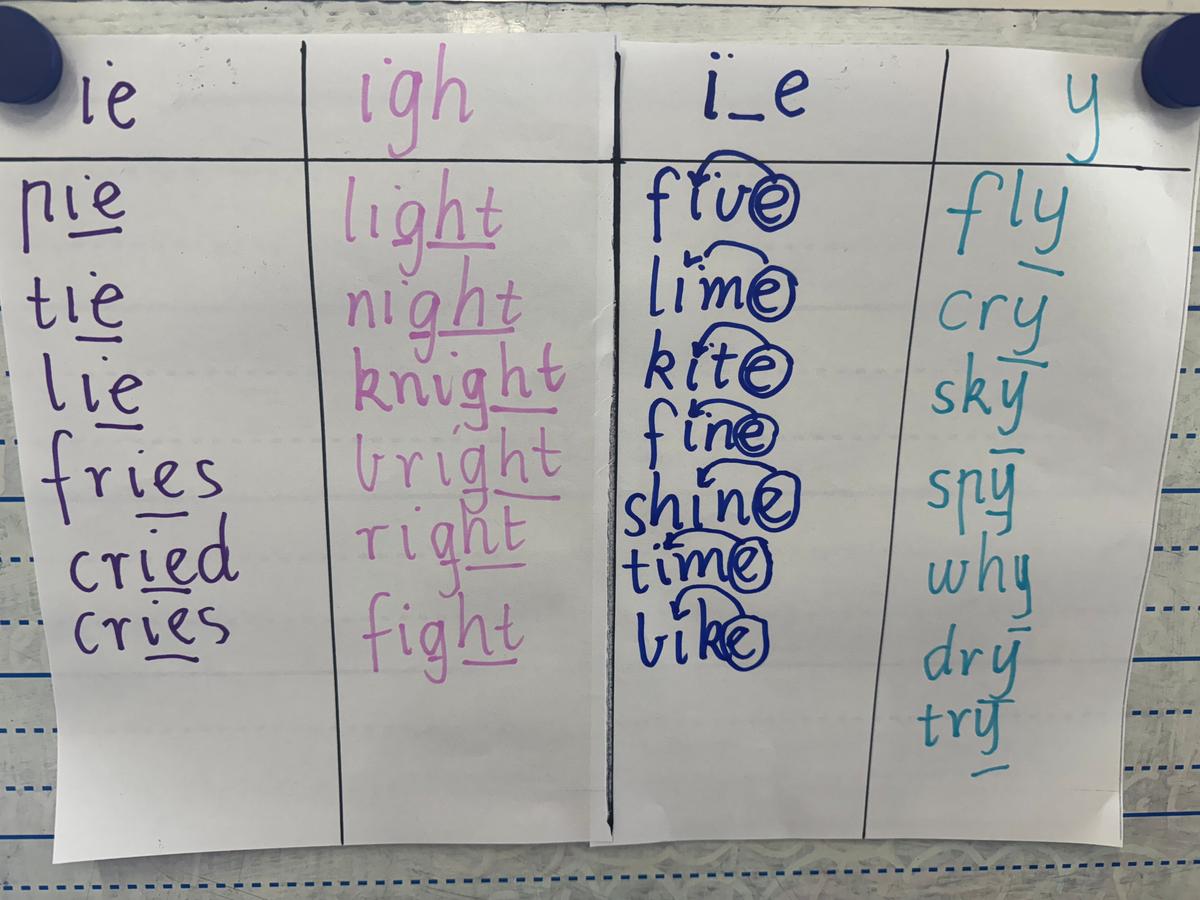
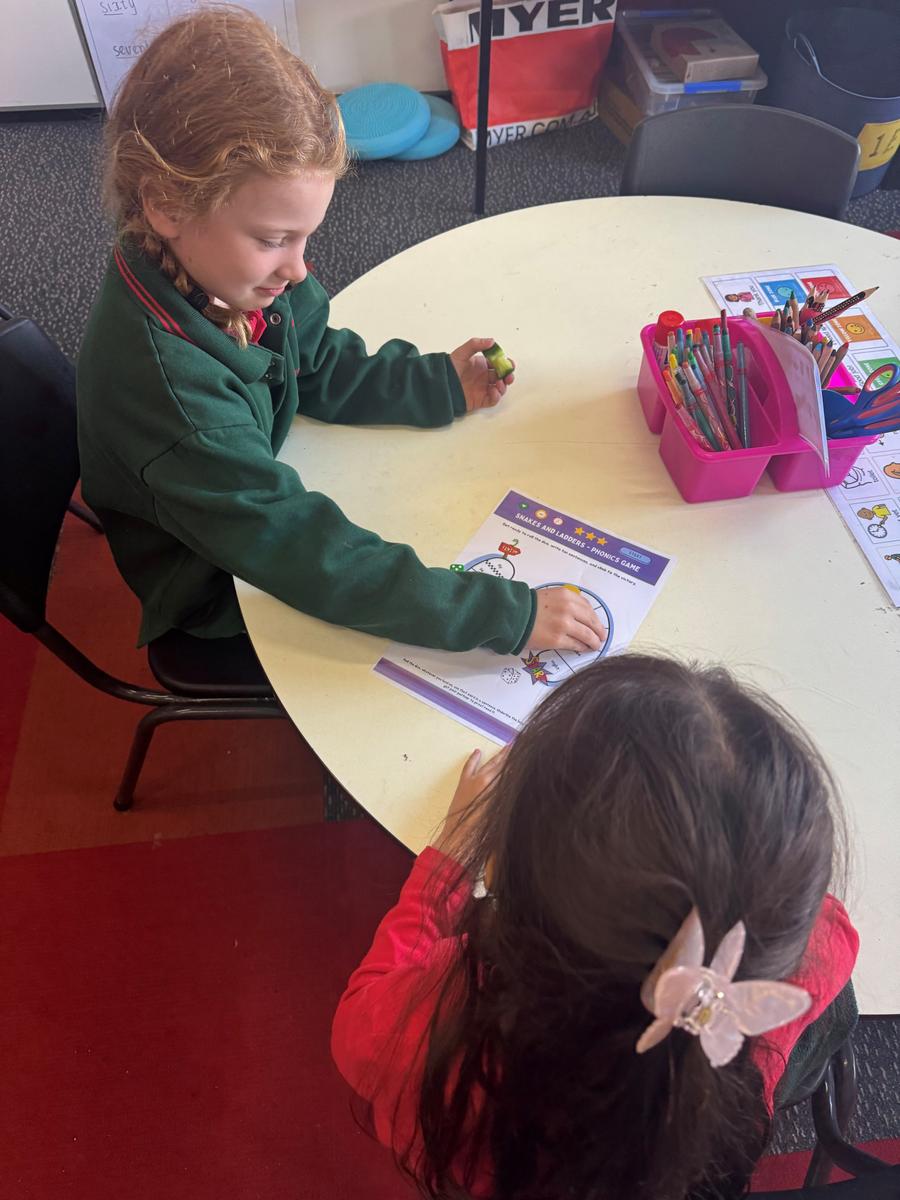
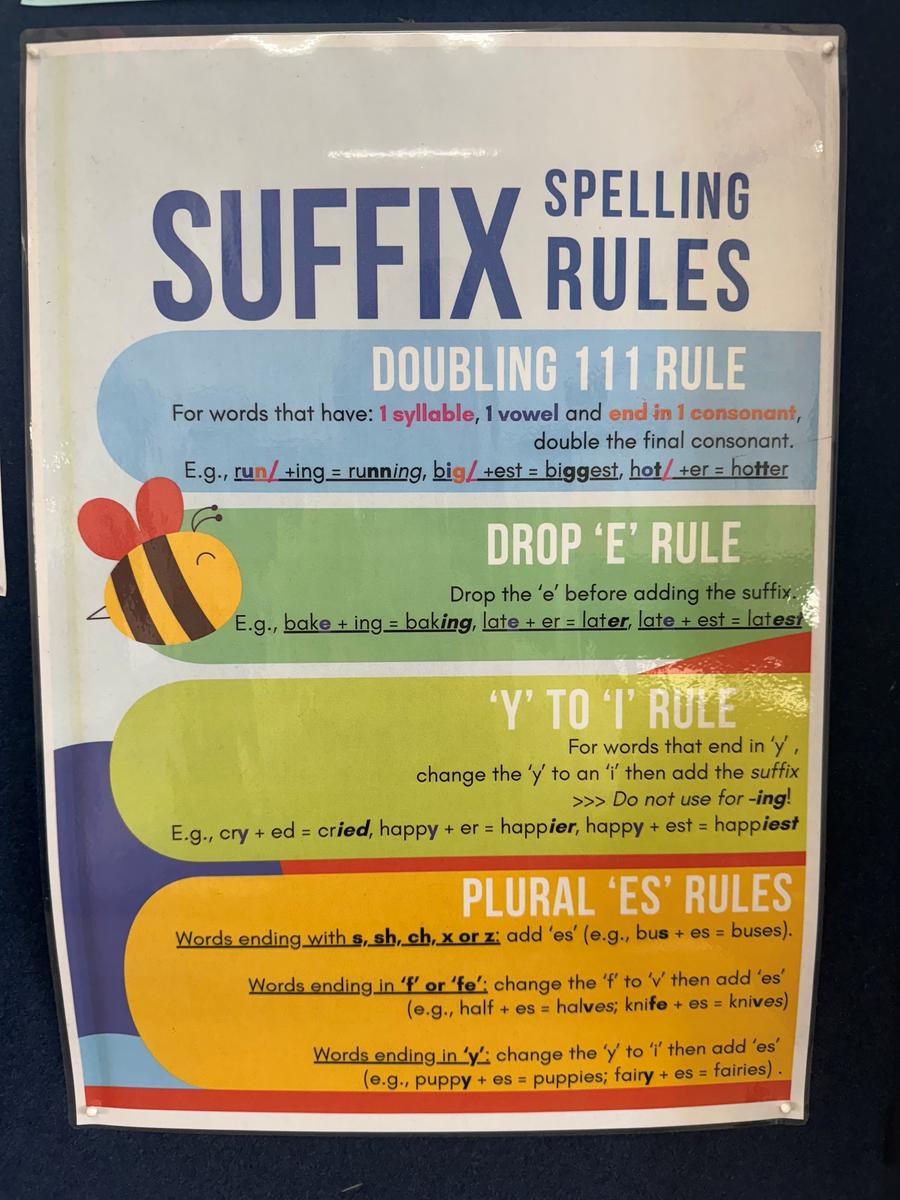
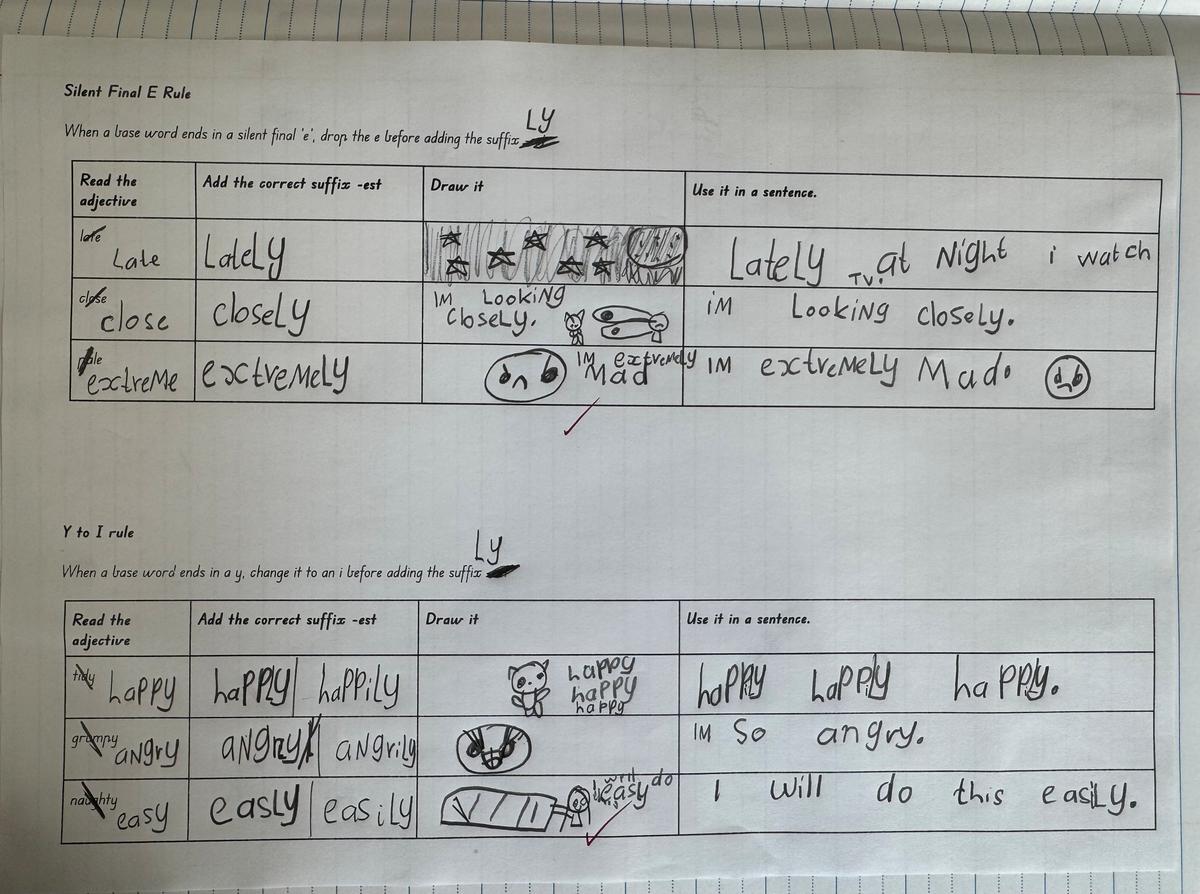




In Year 2, students have been exploring how to add suffixes to words, focusing on the 1:1:1 rule and the silent 'e' rule. The 1:1:1 rule states that if a base word has one syllable, one short vowel, and ends with one consonant, we double the final consonant before adding a suffix that begins with a vowel. For example, "hop" becomes "hopping," and "run" becomes "running." Additionally, when a base word ends in a silent 'e', we drop the 'e' before adding a suffix that begins with a vowel. For example, "make" becomes "making," and "hope" becomes "hoping." Students have applied these rules to words with the suffixes -ly, -er, -est, and -ing, enhancing their spelling and understanding of word structures. This learning complements their daily phonics practice, reinforcing their skills in reading and writing.